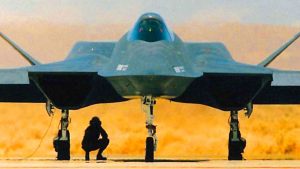The A-10 was built with the ability to strike ground targets while maintaining top maneuverability at low airspeeds and altitudes.

Back a few months, on a beautiful, sunny early-fall day, this writer was outside when an audible sound became increasingly loud. I knew it was an A-10 Thunderbolt II from the Fairchild Republic, a single-seat, twin-turbo, straight-wing, subsonic attack aircraft that initially saw service in 1976.
I concluded that there were other planes as the sound grew louder and appeared to echo. Even though it wasn’t deafening, the noise was loud enough that neighbors on my block soon peered out to see the plane. It isn’t that unusual of a sound as I live close to Selfridge Air National Guard Base (ANGB), Michigan, but I rarely get to view the aircraft flying so low overhead.
Nevertheless, I was thrilled to see four planes flying low over my neighborhood that September afternoon as they prepared to pass over Lake St. Clair. I can only speculate as to what America’s foes on the ground in the Balkans, Afghanistan, and Iraq may have thought as they heard the roar of the approaching aircraft as I watched it take off.
This argument must be made since there has been discussion over whether the US Air Force would require a stealthier A-10. The argument, however, misunderstands the aircraft’s function, which is officially known as the Thunderbolt but is referred to by its crew members as the “Warthog.”
Explained the A-10 was not intended to approach an opponent covertly.
Instead, before it pours down hellfire, its thunderous entrance is supposed to give a loud, unequivocal warning if an A-10 is heard approaching while in an armored vehicle, you might choose to take your chances outside.
The A-10 was built to maintain a highly accurate weapons delivery platform while providing exceptional mobility at low airspeeds and altitudes. The aircraft can operate under 1,000-foot ceilings (303.3 meters) with 1.5 miles (2.4 kilometers) of visibility, land harshly, and linger close to conflict locations for extended periods. Operations in and out of places close to the front lines are made possible by the Warthog’s broad combat radius and quick takeoff and landing capabilities. Moreover, A-10C pilots can fly missions in darkness by wearing night vision goggles.
Its development primarily for ground-support aircraft accounts for its continued use nearly five decades after it first took to the skies.
A wholly fictitious A-14 Wild Wolf was shown in conceptual artwork by aviation artist Rodrigo Avella that circulated online earlier this year. His impressive spoof fighter combined more contemporary features, such as the stealth mentioned above, with some of the characteristics of the A-10 Warhog. It would improve an excellent aircraft by enabling the A-10 to fly in crowded skies and launch low-altitude assaults on ground targets.
Although the photographs are spectacular, they miss the A-10’s intended purpose entirely. Most significantly, it overlooked that the A-10 has a worthy replacement.
Ground attack is one of the several missions for which the Lockheed Martin F-35 Lightning II was designed. Even so, the F-35 would never function in the same manner as the A-10 did when used against ground targets. It is not a criticism of the F-35 but rather an observation of how aerial combat has changed. Why should the Air Force build a stealth ground-attack aircraft while the United States Navy is not seeking to develop a stealth dive bomber to engage hostile aircraft carriers?
The answer is that they shouldn’t and won’t.
Before developing cutting-edge anti-aircraft systems like Russia’s S-400 Triumf, they created the A-10 for a specific purpose. There is little reason to assume the imagined A-14 could take off from a rural road converted into an austere airbase, just as modern aircraft, including the F-35, will never do.
Nevertheless, despite much hoopla surrounding its capabilities, the A-10 has proven to be a terrific aircraft. There is a frequent misconception that the 1991 Gulf War destroyed more than 900 Iraqi tanks. Subsequently, it was discovered that the real number was closer to 300 tanks. That is still a significant number, but Ukrainian soldiers have destroyed Russian tanks with the help of drones and man-portable anti-tank missiles.
In other words, future conflicts won’t require an aircraft like the A-14. However, the Air Force should focus on combat aircraft for the future rather than trying to improve an aircraft that could operate where control of the skies was never in contention in the first place. The images may make for entertaining “aviation porn,” and such an aircraft might be enjoyable to fly in a video game.






